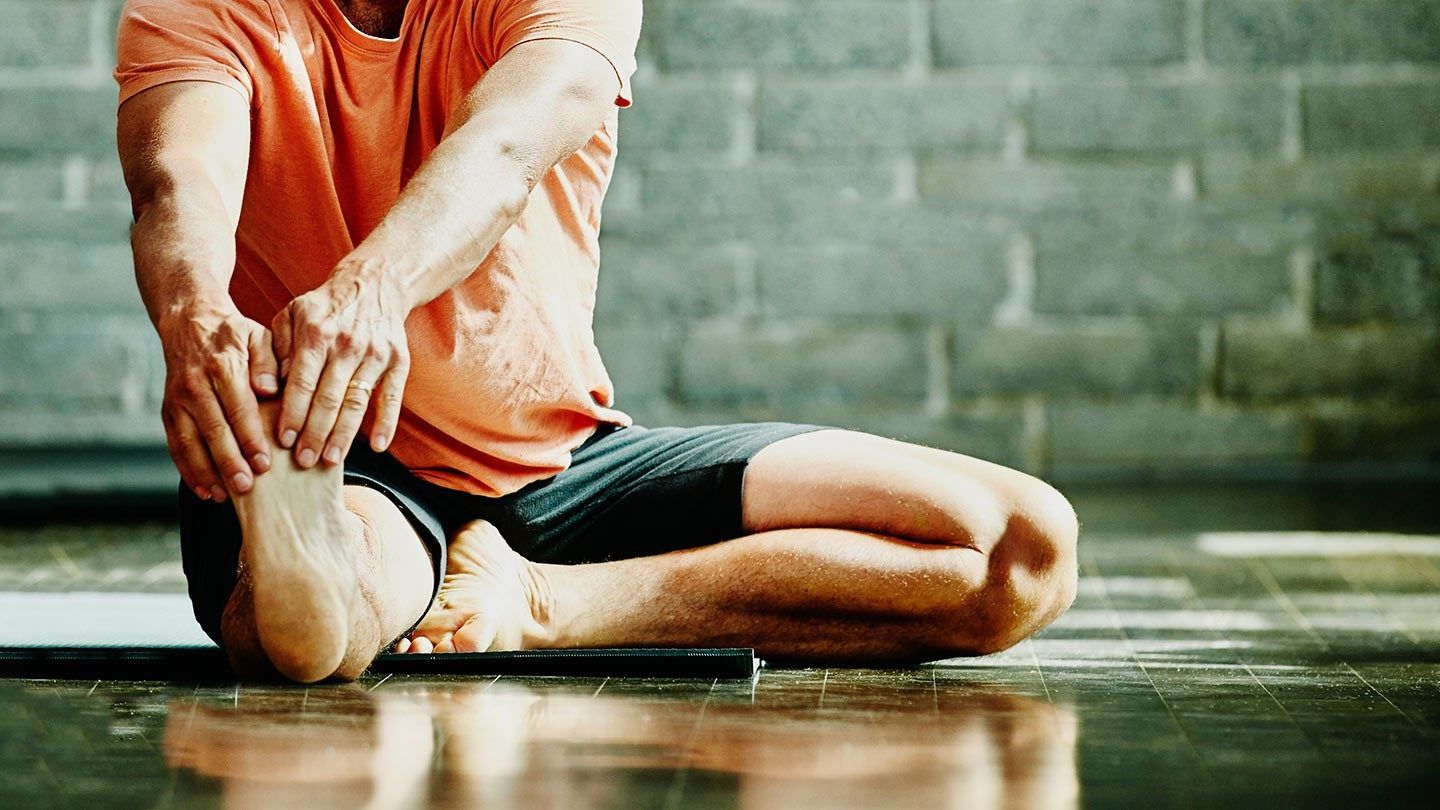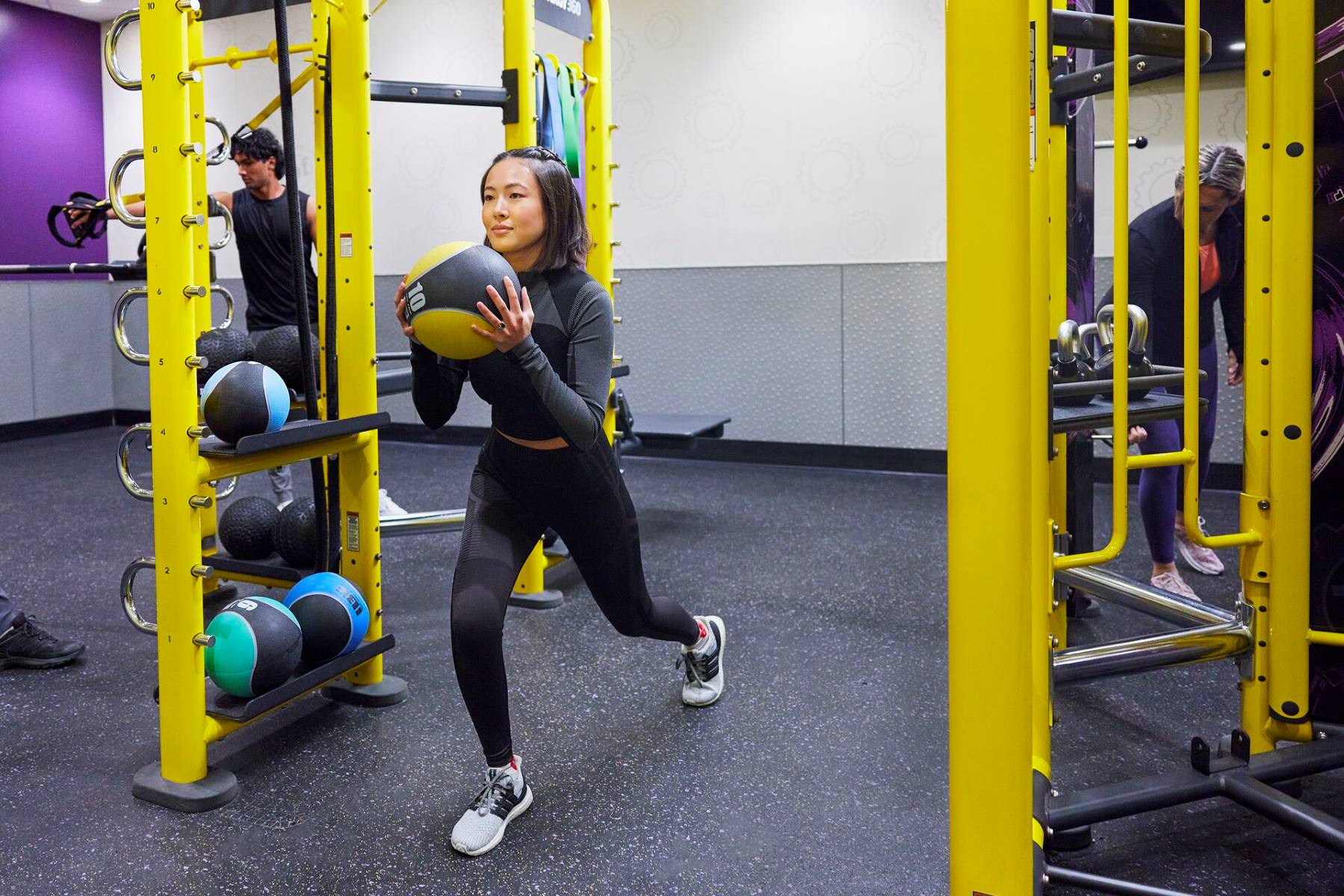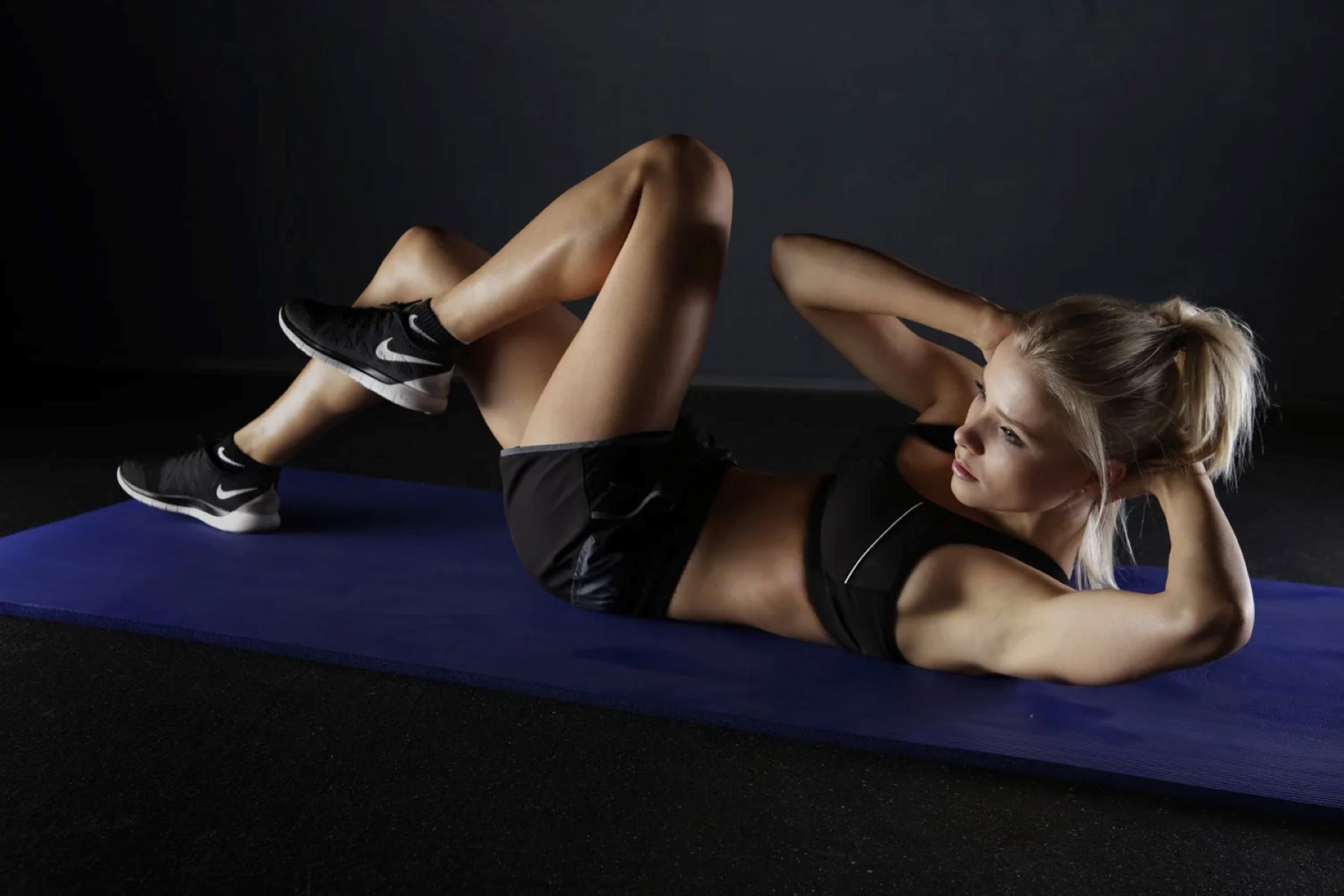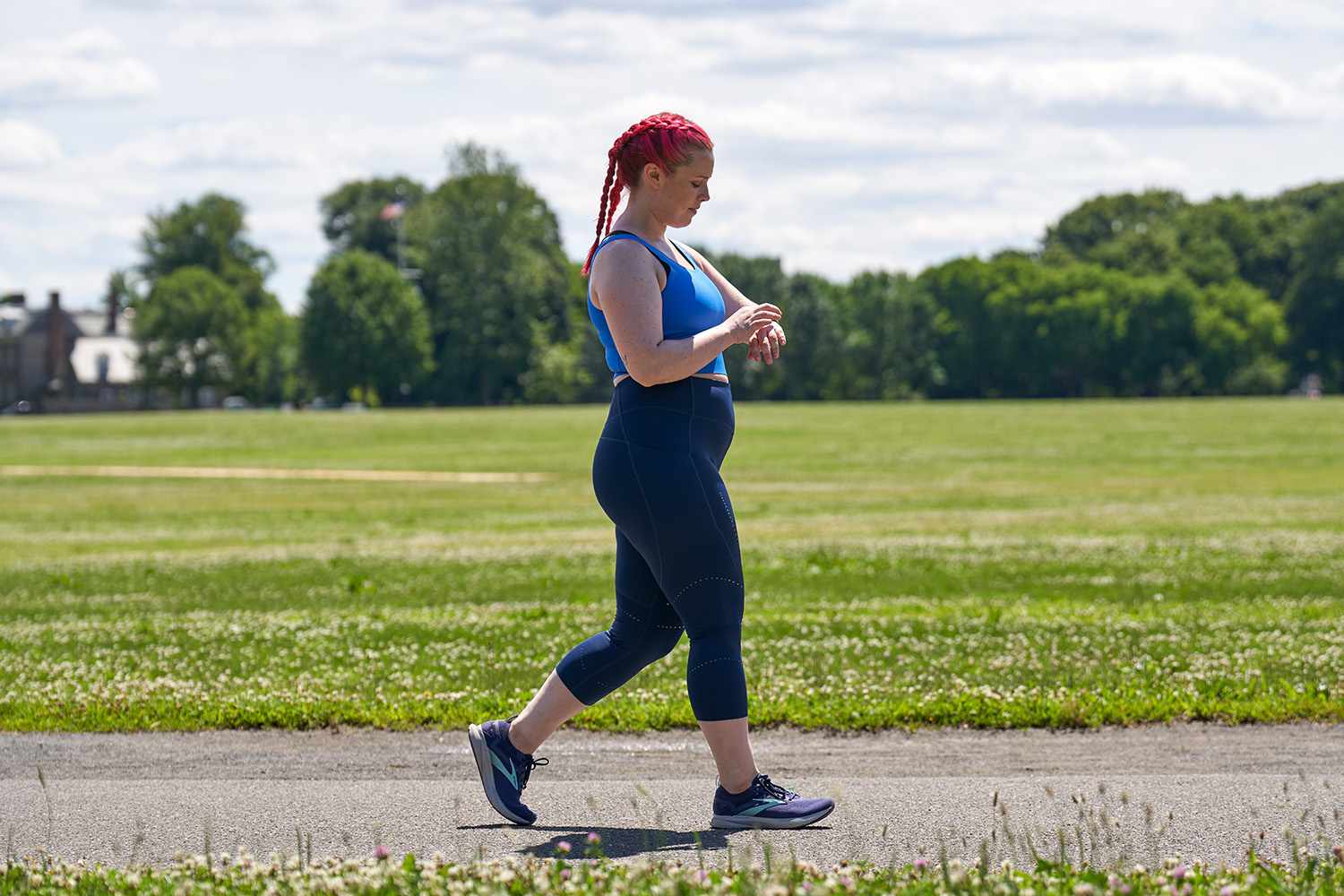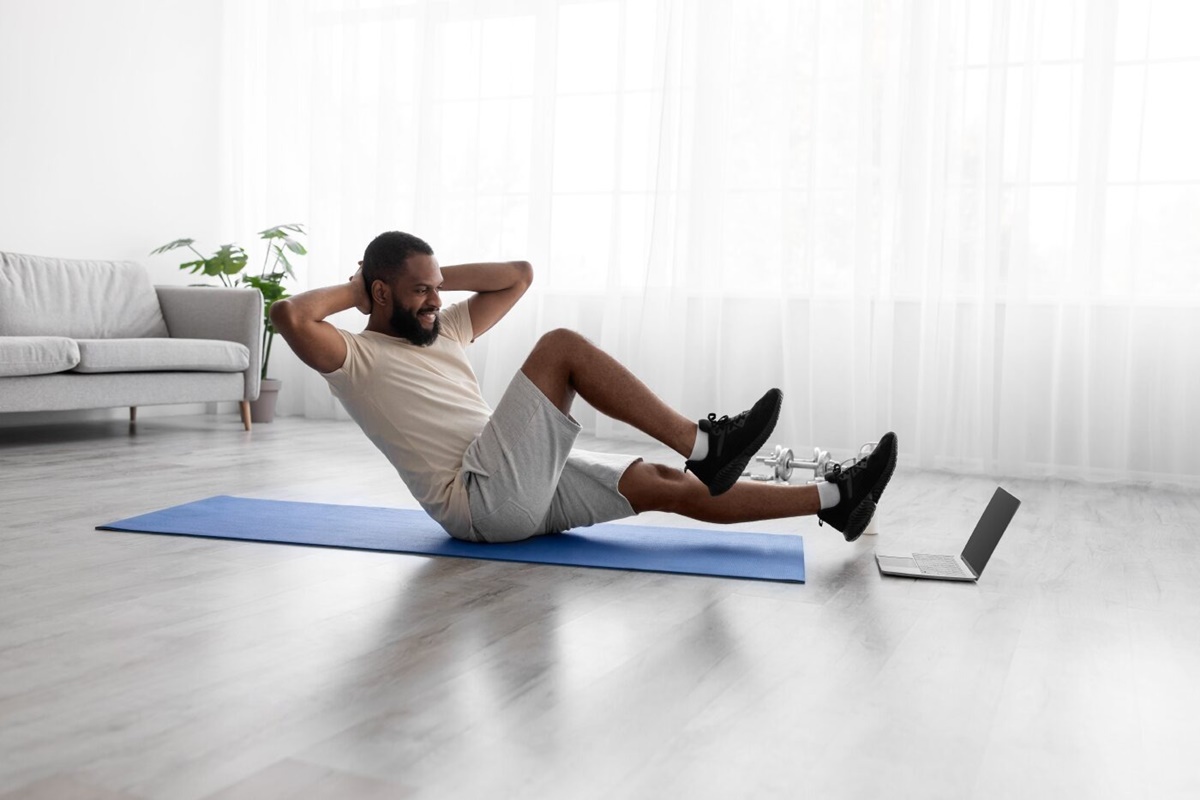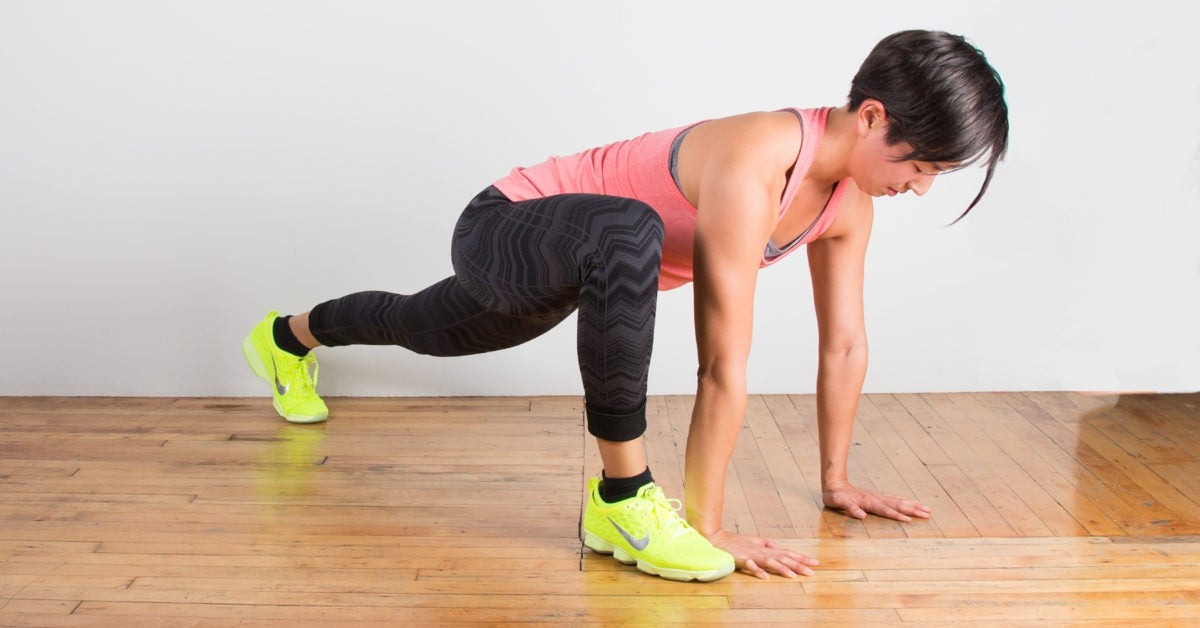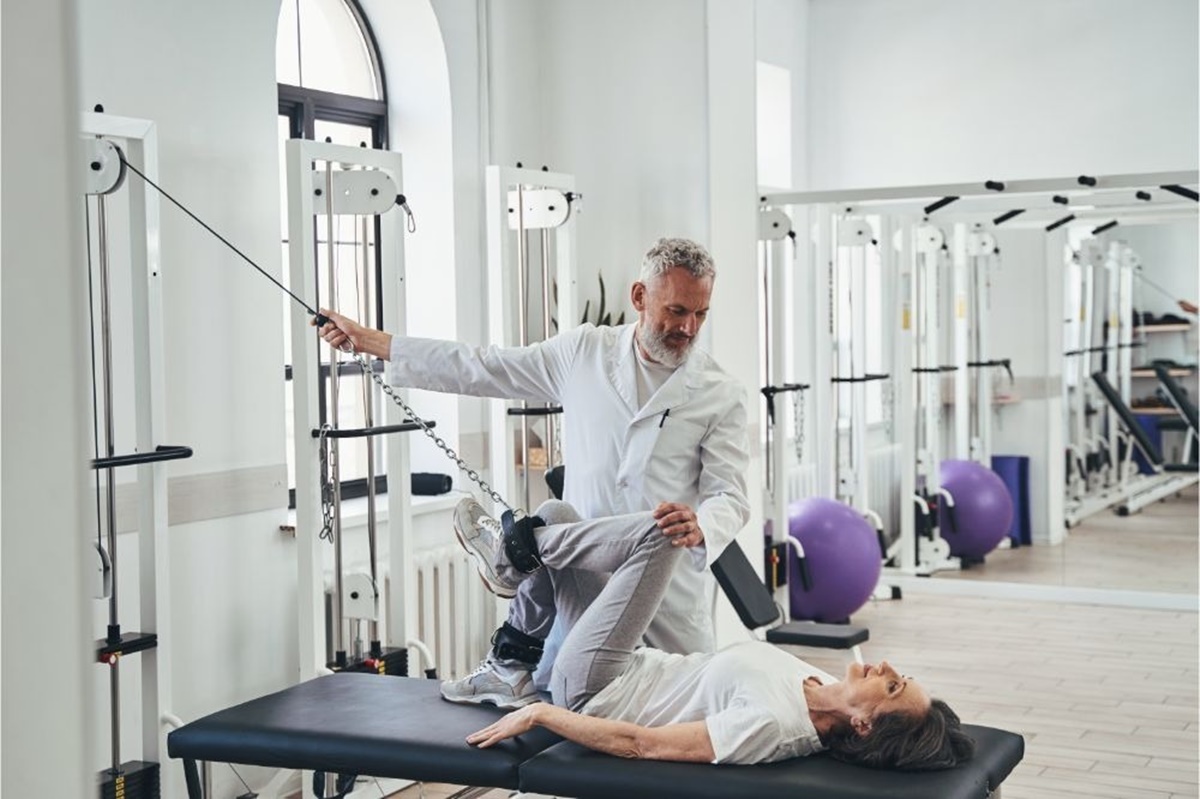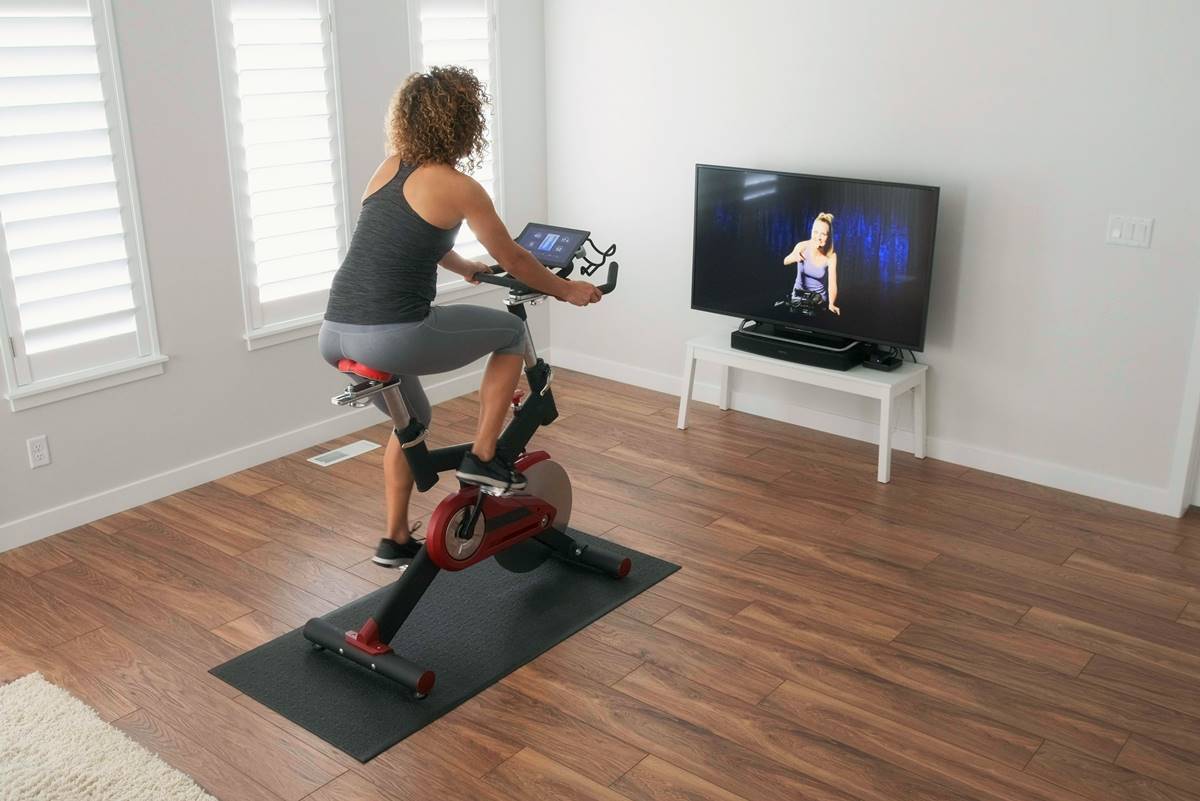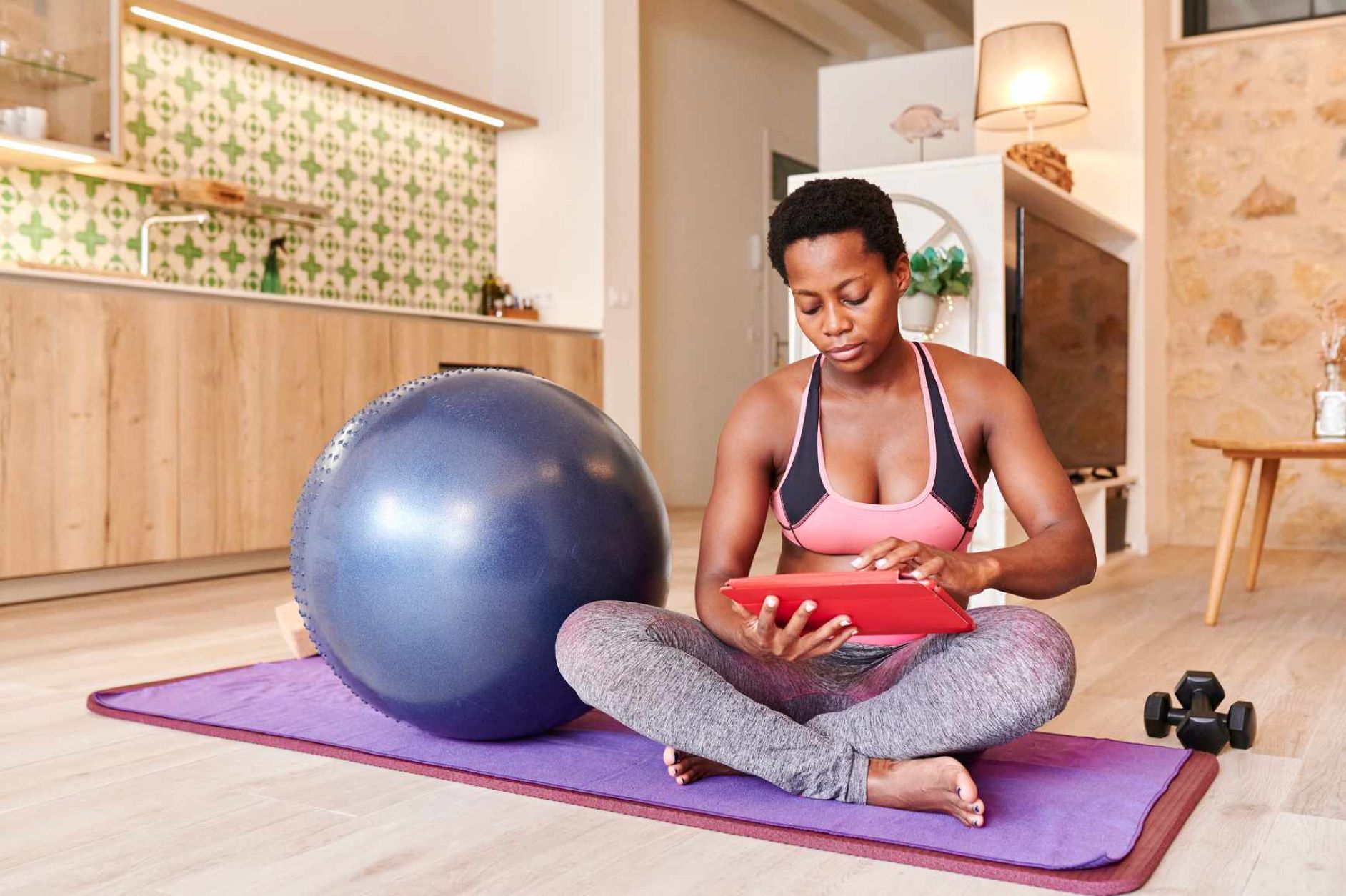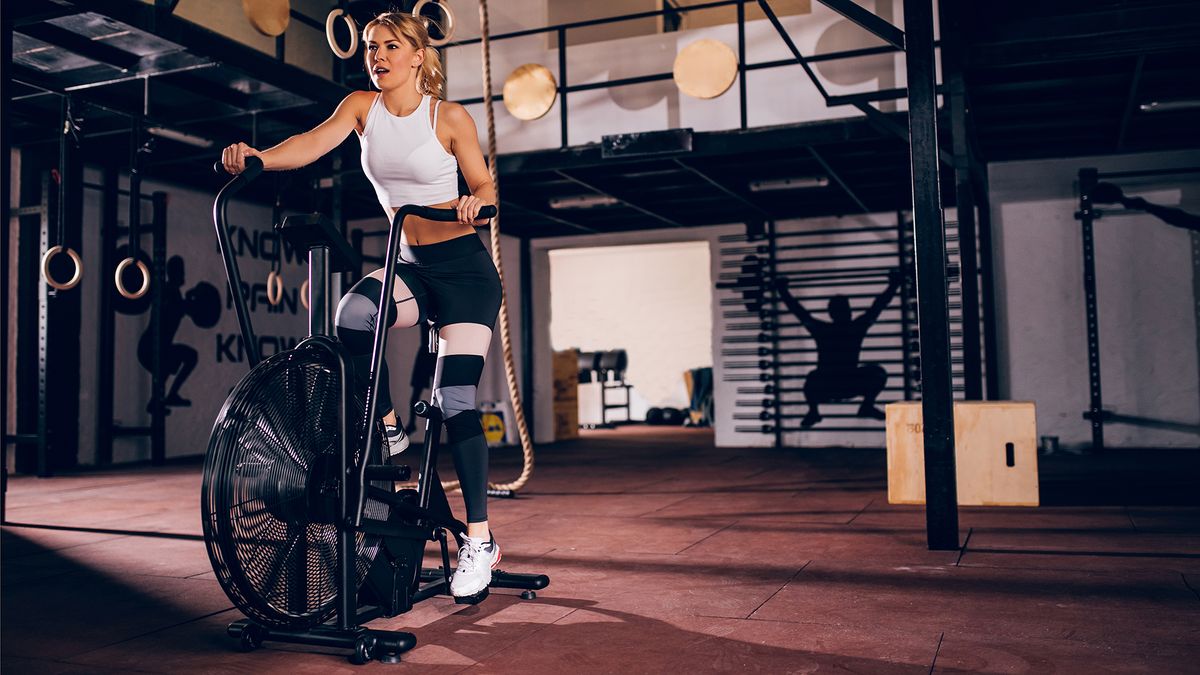

Featured
How To Lose Weight On Exercise Bike
Modified: January 22, 2024
Achieve your weight loss goals with our featured exercise bike. Learn how to lose weight effectively and efficiently with our expert tips and guidance.
Introduction
Welcome to the world of exercise bikes—a fantastic tool for weight loss and overall fitness! Whether you’re new to exercise or a seasoned fitness enthusiast, the exercise bike can be a powerful ally in your weight loss journey. With its low impact on the joints, customizable resistance levels, and convenient indoor accessibility, an exercise bike offers a safe and efficient way to burn calories and shed those extra pounds.
Using an exercise bike for weight loss comes with numerous benefits. Not only does it help improve cardiovascular health and build muscle strength, but it also allows for a varied workout routine that can be easily adjusted to suit your fitness level. Plus, it provides a great opportunity to engage in a fun and engaging workout without the need to go to a gym or face harsh weather conditions.
In this comprehensive guide, we will explore the many benefits of using an exercise bike for weight loss and provide you with the tools and knowledge to maximize your workout results. From setting up your exercise bike properly to establishing a workout routine tailored to your needs, we will cover every aspect to help you achieve your weight loss goals.
So, whether you’re looking to shed a few pounds or simply maintain a healthy lifestyle, hop on that exercise bike and get ready to ignite your fat-burning potential!
Benefits of Using an Exercise Bike for Weight Loss
Using an exercise bike for weight loss offers a multitude of advantages that can greatly enhance your fitness journey. Here are some key benefits to consider:
- Low impact on joints: Unlike running or other high-impact exercises, using an exercise bike puts minimal stress on your joints. This makes it an ideal choice for individuals with joint pain or injuries, allowing them to burn calories and lose weight without exacerbating their condition.
- Effective calorie burning: One of the primary benefits of an exercise bike is its ability to burn a significant amount of calories. Depending on your weight and intensity level, you can burn anywhere from 300 to 600 calories in a 30-minute workout. Consistently incorporating exercise bike sessions into your routine will contribute to sustainable weight loss over time.
- Cardiovascular health: Regular cardiovascular exercise is crucial for maintaining a healthy heart. Using an exercise bike increases your heart rate, improving cardiovascular endurance and strengthening your heart muscles. This, in turn, reduces the risk of heart disease, strokes, and other cardiovascular conditions.
- Convenience and accessibility: An exercise bike offers the convenience of working out from the comfort of your home. It eliminates the need to travel to a gym or deal with inclement weather conditions. With a bike at home, you have the freedom to exercise whenever it suits you, ultimately increasing consistency in your workout routine.
- Customizable resistance levels: Exercise bikes allow you to adjust the resistance levels according to your fitness level and goals. As you progress, you can gradually increase the resistance to challenge your muscles and continue to burn more calories. This versatility ensures that your workouts remain effective and engaging in the long run.
- Full-body workout potential: While an exercise bike primarily engages your lower body muscles, you can incorporate upper body exercises such as weightlifting or using resistance bands during your workouts. This way, you can transform your exercise bike routine into a full-body workout, targeting multiple muscle groups and maximizing calorie burn.
Now that you’re familiar with the numerous benefits of using an exercise bike for weight loss, it’s time to dive into the practical aspects of setting up your bike and establishing an effective workout routine. So, gear up and let’s get started on your path to a healthier, fitter you!
Setting Up Your Exercise Bike
Before you begin your weight loss journey on an exercise bike, it’s important to ensure that your bike is set up properly. Follow these steps to ensure a safe and comfortable workout:
- Adjust the seat: The seat height should be adjusted so that when you sit on the bike, your feet can comfortably reach the pedals with a slight bend in your knees. Adjust the seat horizontally as well to find a position that allows for a natural pedaling motion.
- Check the handlebars: The handlebars should be positioned at a height that allows you to maintain an upright posture while gripping the handlebars. Make sure they are not too far or too close, and adjust them to a comfortable position.
- Test the resistance levels: Experiment with the resistance settings to find a level that challenges you without putting excessive strain on your muscles. Start with a lower resistance if you’re a beginner and gradually increase it as you progress in your fitness journey.
- Secure your feet: Ensure that your feet are securely strapped into the pedal straps or pedal cages, if your exercise bike has them. This will provide stability and prevent your feet from slipping during your workout.
- Check the bike’s stability: Make sure your exercise bike is placed on a flat and stable surface, and that it doesn’t wobble during use. Adjust the bike’s levelers, if necessary, to ensure stability and prevent accidents.
Once you have adjusted your bike to your liking, it’s important to take a few minutes to warm up before diving into your workout. This will increase blood flow to your muscles and prepare your body for the exercise session ahead.
Remember, proper bike setup is essential for an effective and safe workout. Take the time to ensure everything is properly adjusted before each session to prevent any discomfort or potential injuries. So, get your exercise bike ready and let’s move on to establishing a workout routine that will help you achieve your weight loss goals!
Establishing a Workout Routine
Now that you have your exercise bike set up, it’s time to establish a workout routine that suits your fitness level and weight loss goals. By following a structured plan, you can stay motivated, track your progress, and achieve maximum results. Here are some tips to help you establish a workout routine:
- Set realistic goals: Start by setting achievable goals for yourself. Whether it’s a specific number of pounds you want to lose or a target distance or duration for your workouts, having a clear objective will keep you focused and motivated.
- Determine your workout frequency: Decide how many days a week you will dedicate to your exercise bike workouts. Aim for at least three to four days a week to see significant progress.
- Vary your workouts: To avoid boredom and plateauing, mix up your workouts by incorporating different types of sessions. Include steady-state rides, interval training, and hill climbs to challenge your body and keep your workouts exciting.
- Gradually increase intensity: As your fitness level improves, gradually increase the intensity of your workouts. This can be done by increasing resistance, speed, or incorporating longer workout durations.
- Include rest days: Adequate rest is essential for muscle recovery and preventing overuse injuries. Make sure to include rest days in your workout routine to give your body time to heal and rebuild.
- Track your progress: Keep a record of your workouts, including distance, duration, and any notes about how you felt during the session. This will help you track your progress, identify areas for improvement, and stay motivated as you see your fitness level and weight loss journey unfold.
- Listen to your body: Pay attention to how your body feels during and after your workouts. If you experience pain or discomfort, adjust your intensity or take a break. It’s important to listen to your body and avoid pushing yourself beyond your limits.
Remember, consistency is key when it comes to achieving your weight loss goals. Stick to your workout routine, stay committed, and celebrate the small victories along the way. With determination and a well-structured plan, you’ll be well on your way to a healthier and fitter you!
Warm-Up Exercises
Before each exercise bike session, it is crucial to dedicate a few minutes to warm up your body. Warming up prepares your muscles and joints for the upcoming workout, decreases the risk of injury, and improves overall performance. Here are some effective warm-up exercises to incorporate into your routine:
- March in place: Begin by standing with your feet hip-width apart. Lift your knees one at a time as if you were marching in place. Engage your core and swing your arms naturally. Do this for about one to two minutes to increase your heart rate and warm up your leg muscles.
- Arm circles: Stand with your feet shoulder-width apart, extend your arms out to the sides parallel to the floor, and start making small circles with your arms. Gradually increase the size of the circles, then switch directions. Perform this exercise for about 30 seconds to warm up your shoulder and arm muscles.
- Leg swings: Stand next to a wall or a sturdy object for support. Swing one leg forward and backward, keeping it straight, as if you were kicking. Repeat this motion for about 10 swings, then switch legs. This exercise helps to warm up your hip flexors and improve leg mobility.
- Side lunges: Stand with your feet wider than hip-width apart. Shift your weight to one side, bend your knee, and lower your body into a lunge position. Return to the starting position, then repeat on the other side. Do 10 lunges on each side to warm up your inner and outer thigh muscles.
- Neck rotations: Stand tall and slowly rotate your neck in a circular motion, starting from one side and moving clockwise or counterclockwise. Repeat this movement for about 10 seconds in each direction to loosen up your neck muscles and improve flexibility.
Remember to perform these warm-up exercises at a comfortable pace, gradually increasing your range of motion as your muscles warm up. By incorporating these exercises into your routine, you’ll ensure that your body is properly prepped for your exercise bike workout, reducing the risk of strains or injuries.
Now that you’re warmed up and ready to go, let’s move on to explore specific workout routines for different fitness levels!
Beginner Level Workouts
If you’re new to using an exercise bike or haven’t exercised in a while, it’s important to start with beginner-level workouts. These workouts will help you build stamina and gradually increase your fitness level. Here are a few workout ideas to get you started:
- Steady-State Ride: Begin with a 10-minute warm-up, pedaling at a moderate pace with low resistance. Then, maintain a consistent pace for 20-30 minutes, keeping the resistance at a level that challenges you but still allows you to maintain proper form and comfortably breathe. Finish with a 5-minute cool-down, gradually reducing your speed and resistance.
- Interval Training: Start with a 5-minute warm-up at a comfortable pace. Then, alternate between 1 minute of higher intensity pedaling with increased resistance and 1 minute of lower intensity recovery pedaling. Repeat this cycle for a total of 20-30 minutes. Finish with a 5-minute cool-down.
- Hill Climbs: Begin with a 10-minute warm-up, pedaling at a moderate pace with low resistance. Then, gradually increase the resistance to simulate climbing uphill. Maintain a slower pace but engage your leg muscles more intensely. Continue this climb for 10-15 minutes, then return to a lower resistance for a 5-minute cool-down.
As a beginner, the key is to focus on consistency and gradually increasing your workout duration and intensity. Listen to your body and adjust the resistance levels and duration of your workouts based on your comfort level. Remember to drink plenty of water and take breaks as needed.
Start with two to three workouts per week and gradually increase the frequency as you build strength and endurance. Over time, you can also consider adding strength training exercises or incorporating upper-body movements while pedaling to further challenge your muscles.
Don’t forget to track your progress and celebrate your achievements along the way. As you gain confidence and stamina, you can move on to more challenging workout routines to continue reaching your weight loss goals.
Now that you have the basics, let’s explore intermediate level workouts to take your fitness journey a step further!
Intermediate Level Workouts
As you progress in your fitness journey, it’s time to challenge yourself with intermediate level workouts on your exercise bike. These workouts will help increase your cardiovascular endurance, burn more calories, and continue pushing your limits. Here are a few workout ideas to try:
- Pyramid Intervals: Start with a 10-minute warm-up at a moderate pace. Then, increase your resistance and pedal at a challenging intensity for 1 minute. Follow this with a 1-minute recovery period at a lighter intensity. Gradually increase the work intervals to 2 minutes, 3 minutes, and then decrease back down to 1 minute with a recovery period in between each interval. Finish with a 5-minute cool-down.
- Tabata Training: Tabata involves short bursts of high-intensity exercise followed by shorter recovery periods. Warm up for 5 minutes, then alternate between 20 seconds of maximum effort pedaling and 10 seconds of rest. Repeat this cycle for a total of 4 minutes. Rest for 1-2 minutes, then repeat the Tabata cycle one or two more times. Finish with a 5-minute cool-down.
- Long Endurance Ride: Challenge your endurance with a longer ride. Start with a 10-minute warm-up followed by 45-60 minutes of steady-state riding at a moderate resistance level. Maintain a consistent pace and focus on your breathing and form. Finish with a 5-10 minute cool-down.
As an intermediate level rider, it’s important to continue challenging yourself while also listening to your body and adjusting your workouts accordingly. Increase the resistance gradually, push yourself to maintain a faster pace, and explore different workout formats to keep things interesting and challenging.
Incorporating strength training exercises into your routine can also be beneficial at this stage. Consider adding weightlifting or bodyweight exercises for your upper body or core while pedaling at a moderate resistance. This will help build strength and engage more muscles, leading to better overall fitness and weight loss results.
Remember to consistently track your progress, gradually increase the frequency of your workouts, and maintain proper form and technique. Stay motivated by setting new goals, rewarding yourself for achievements, and seeking out workout buddies or online communities for support and accountability.
Now that you’re gaining momentum in your fitness journey, let’s explore advanced level workouts to take your exercise bike workouts to the next level!
Advanced Level Workouts
Congratulations on reaching the advanced level of your exercise bike journey! It’s time to challenge yourself further and unlock your full potential. These advanced-level workouts will test your endurance, strength, and mental toughness. Here are a few workout ideas to keep pushing your limits:
- HIIT Intervals: Warm up for 10 minutes at a moderate pace. Then, alternate between 30 seconds of all-out effort pedaling with maximum resistance and 30 seconds of active recovery at a light intensity. Repeat this cycle for a total of 10-15 minutes. Finish with a 5-minute cool-down.
- Fartlek Training: This workout involves mixing up your speed and resistance levels throughout your ride. Start with a 10-minute warm-up, then choose landmarks or specific time intervals to increase your intensity to a challenging level for a short burst. Return to a comfortable pace for recovery before ramping up again. Continue this cycle for 30-45 minutes, then cool down for 5-10 minutes.
- Interval Pyramids: Begin with a 10-minute warm-up followed by 1 minute of high-intensity pedaling, then 1 minute of recovery. Increase the work intervals to 2 minutes, 3 minutes, 4 minutes, and then decrease back down to 1 minute with a recovery period in between. Maintain challenging resistance levels throughout the workout. Finish with a 5-minute cool-down.
- Endurance Challenges: Push your endurance with longer rides at a high resistance level. Aim for 60-90 minutes of steady-state riding, maintaining a consistent but challenging pace throughout. Focus on mental resilience and staying motivated during the extended duration. Cool down for 5-10 minutes to conclude the workout.
As you engage in advanced level workouts, be mindful of your body’s limits and ensure you have a solid aerobic base before attempting higher-intensity exercises. Maintain proper form and technique, and consider incorporating strength training exercises, such as squatting or lunging off the bike, to further challenge your muscles and enhance your overall fitness.
Monitor your progress, adjust your goals, and celebrate your accomplishments along the way. Stay motivated by exploring new routes, adding music or podcasts to your workouts, or even participating in virtual cycling challenges and competitions.
Keep in mind that recovery is crucial at this stage. Ensure you’re giving yourself enough time to rest and recover between intense workouts to prevent overtraining and injury. Listen to your body, fuel it with proper nutrition, and prioritize sleep for optimal recovery and improved performance.
Now that you’ve reached the advanced level, continue to challenge yourself, enjoy the thrill of pushing your limits, and maintain a consistent workout routine to achieve your weight loss goals and overall fitness aspirations.
Tracking Your Progress
Tracking your progress is an essential part of any fitness journey, including your exercise bike workouts. It not only provides a way to measure your achievements but also keeps you motivated and accountable. Here are some effective methods for tracking your progress:
- Keep a workout journal: Maintain a dedicated journal or an online tracking tool to record the details of each workout. Include information such as duration, distance, resistance levels, and any notes about how you felt during the session. This will allow you to look back and see your progress over time.
- Utilize fitness apps: There are various fitness apps available that allow you to track your exercise bike workouts. These apps can record metrics such as distance, time, speed, and calories burned. They may also provide virtual challenges, training plans, and community support to keep you engaged and motivated.
- Measurements and photos: Besides tracking your workouts, take periodic body measurements and progress photos. These measurements can include weight, waist circumference, and body fat percentage. Compare these measurements regularly to gauge changes in your body composition and visually see your progress.
- Set specific goals: Establish realistic goals and track your progress toward them. Whether it’s weight loss, increased endurance, or hitting a certain distance, having clear objectives will give you something to strive for and provide a sense of accomplishment when you achieve them.
- Listen to your body: Pay attention to your overall well-being and how your body feels during and after workouts. Notice any improvements in energy levels, recovery time, or muscle soreness. These subjective indicators can also serve as valuable markers of progress.
Consistency is key in tracking your progress. Make it a habit to record your workouts regularly, update your measurements periodically, and reflect on your progress. Celebrate both small and big milestones along the way, as each step forward brings you closer to your ultimate fitness goals.
Remember that progress is not always linear, and there will be ups and downs. Use any setbacks as learning experiences and as motivation to keep pushing forward. Your tracking methods will allow you to identify patterns, adjust your approach if needed, and stay focused on your long-term success.
So, grab your journal or open your favorite fitness app, and start documenting your exercise bike workouts today. The data and insights you gather will not only boost your motivation but also serve as a testament to your dedication and hard work.
Maintaining Proper Form
Maintaining proper form during your exercise bike workouts is crucial for maximizing results, preventing injury, and ensuring an effective workout. By keeping a few key pointers in mind, you can ensure that you are getting the most out of each session. Here are some tips for maintaining proper form:
- Posture: Sit upright and avoid slouching or leaning forward excessively. Engage your core muscles to support your spine and maintain a neutral position. This will help you avoid strain on your back and maintain a stable and efficient riding position.
- Foot Placement: Position your feet flat on the pedals, ensuring that the balls of your feet are centered on the pedal surface. This will help you generate power efficiently and prevent your feet from slipping during the workout. Adjust the straps or cages as needed to secure your feet in place.
- Grip: Hold the handlebars with a relaxed grip, avoiding excessive tension in your hands and wrists. Maintain a comfortable grip that allows you to steer and control the bike while still maintaining stability.
- Cadence: Aim for a consistent and controlled pedaling cadence. Ideally, you should aim for a cadence of around 80-100 revolutions per minute (RPM). This will help you maintain an efficient pedal stroke and reduce the strain on your joints.
- Resistance: Adjust the resistance on your exercise bike to a level that challenges you but still allows you to maintain proper form and a controlled pedal stroke. Avoid using excessively high resistance that may cause you to strain or use improper form.
- Breathing: Maintain a steady and controlled breathing pattern throughout your workout. Breathe deeply and rhythmically to provide oxygen to your muscles and help maintain a steady pace.
- Listen to your body: Pay attention to any discomfort or pain during your workouts. If something feels off or you experience any sharp or unusual pain, stop and assess your form and technique. Adjust as needed to avoid injury and seek guidance from a fitness professional if necessary.
By maintaining proper form, you engage the correct muscles, improve your overall efficiency, and reduce the risk of injury. Practice these tips consistently, and they will become second nature during your exercise bike workouts.
Remember that everyone’s body is different, so it is essential to adapt these form guidelines to your individual needs and comfort level. If you have any concerns or specific physical conditions, consult with a fitness professional for personalized guidance.
With proper form as your foundation, you can confidently pedal your way towards your weight loss and fitness goals, all while minimizing the risk of injury and maximizing the benefits of your exercise bike workouts.
Staying Motivated
Staying motivated is essential for maintaining consistency and achieving your weight loss goals on your exercise bike. While it’s normal to have ups and downs in motivation, there are strategies you can employ to keep yourself on track and committed to your fitness journey. Here are some helpful tips for staying motivated:
- Set specific and realistic goals: Establish clear goals that are achievable and relevant to your weight loss aspirations. Break them down into smaller milestones to gradually track your progress and celebrate your accomplishments along the way.
- Find your why: Remind yourself of the reasons why you embarked on this fitness journey in the first place. Whether it’s to improve your health, boost your confidence, or set a positive example for others, keeping your motivation grounded in your personal “why” will help you stay committed.
- Track your progress: Regularly monitor and record your workout data, body measurements, and other indicators of progress. Seeing tangible evidence of your improvement can be incredibly motivating and inspire you to keep pushing forward.
- Reward yourself: Treat yourself for reaching milestones or sticking to your workout routine. Celebrate your achievements with non-food rewards such as a new workout gear, a massage, or a day off to relax and recover.
- Mix up your workouts: Keep your exercise routine exciting by incorporating variety into your workouts. Try new workout formats, explore different cycling routes, or join virtual challenges. The element of novelty can reignite your motivation and make your workouts more enjoyable.
- Get social support: Share your fitness journey with friends, family, or an online fitness community. Surround yourself with people who understand and support your goals. Joining group workouts or finding an accountability partner can provide additional motivation and help you stay on track.
- Practice self-care: Take care of your overall well-being by getting enough sleep, eating nutritious meals, and managing stress. When you take care of your physical and mental health, you’ll have more energy and motivation to tackle your exercise bike workouts.
- Visualize success: Create a mental image of the body and lifestyle you want to achieve through your exercise bike workouts. Visualize yourself reaching your weight loss goals, feeling strong and confident. Use this visualization as a source of inspiration and motivation during your workouts.
- Embrace challenges: Recognize that setbacks and plateaus are a part of any fitness journey. Instead of getting discouraged, view challenges as opportunities for growth and learning. Keep pushing yourself, and remember that every small step forward brings you closer to your ultimate goal.
Staying motivated requires dedication, commitment, and a positive mindset. Experiment with these strategies and find what works best for you. Remember, motivation may ebb and flow, but with perseverance, you can overcome any obstacles and continue making progress on your exercise bike journey.
So, stay focused, trust the process, and keep your eyes on the prize. Your hard work and determination will pay off, and you’ll achieve the weight loss and fitness results you desire!
Safety Considerations
While exercise bikes provide a safe and convenient workout option, it is essential to prioritize safety during your cycling sessions. By taking proper precautions, you can reduce the risk of injury and ensure a smooth and enjoyable experience. Here are some important safety considerations to keep in mind:
- Warm-up and cool-down: Always begin your exercise bike workout with a proper warm-up to prepare your muscles and joints for the upcoming activity. Similarly, cool down at the end of your session to gradually lower your heart rate and stretch your muscles.
- Proper bike setup: Ensure that your bike is properly set up, with the seat and handlebars adjusted to your body’s dimensions. This will help maintain proper form and prevent any discomfort while riding.
- Wear appropriate attire: Dress in comfortable, moisture-wicking clothing that allows for freedom of movement. Proper athletic shoes with good traction are also important to provide stability and prevent slipping.
- Stay hydrated: Drink water before, during, and after your exercise bike workouts. Adequate hydration is crucial for maintaining optimal performance and preventing dehydration.
- Use proper technique: Maintain proper form throughout your workouts and focus on a smooth and controlled pedaling motion. Avoid sudden jerky movements, and be mindful of your breathing pattern.
- Gradually increase intensity: If you’re new to exercise or returning after a break, gradually increase the intensity and duration of your workouts. Push yourself to improve but be cautious not to overexert yourself too quickly, which could lead to strain or injury.
- Monitor your heart rate: Consider using a heart rate monitor to gauge your level of exertion and ensure you are within a safe range for your age and fitness level.
- Be aware of surroundings: If you’re cycling outdoors, be mindful of traffic, pedestrians, and other potential hazards. Follow local road rules and choose routes that prioritize safety. If you’re using an indoor exercise bike, ensure that it’s placed on a stable surface away from any obstacles.
- Listen to your body: Pay attention to any discomfort or pain during your workouts. If you experience dizziness, shortness of breath, chest pain, or any other unusual symptoms, stop exercising and seek medical attention if needed.
- Maintain bike maintenance: Regularly inspect your exercise bike for any signs of wear or malfunction. Keep your bike clean and properly lubricated, and check the tension and alignment of the pedals and handlebars.
Prioritizing safety during your exercise bike workouts will help you enjoy a risk-free and effective workout experience. By following these safety considerations, you can focus on your fitness goals and make significant progress in your weight loss journey.
Remember, your well-being is of utmost importance. Always prioritize safety and consult with a healthcare professional if you have any specific concerns or conditions that may impact your ability to exercise safely.
Now, with safety in mind, it’s time to hop on that exercise bike and continue your journey towards improved health and fitness!
Conclusion
Congratulations on completing this comprehensive guide to using an exercise bike for weight loss! By now, you should have a solid understanding of the benefits of exercise biking, how to set up your bike correctly, establish a workout routine, and stay motivated throughout your fitness journey.
Using an exercise bike offers a multitude of advantages, including low impact on joints, effective calorie burning, improved cardiovascular health, convenience, and customizable resistance levels. Remember to prioritize safety by warming up, maintaining proper form, and taking necessary precautions during your workouts.
Whether you’re a beginner, intermediate, or advanced level rider, there are workout options suited to your fitness level. From steady-state rides to interval training and endurance challenges, you have the flexibility to tailor your workouts to meet your goals and keep things interesting.
Throughout your weight loss journey on the exercise bike, tracking your progress, maintaining proper form, and staying motivated are key factors for success. Utilize workout journals, fitness apps, measurements, and personal goals to hold yourself accountable and monitor your achievements.
Remember, staying motivated is crucial for long-term success. Set realistic goals, mix up your workouts, find support from others, and practice self-care to keep your motivation level high.
Lastly, prioritize your safety by following warm-up and cool-down routines, using proper gear and apparel, and monitoring your body’s cues during exercise. By maintaining a safe and enjoyable environment, you can continue to reap the benefits of exercise biking without unnecessary risks.
Now, it’s time to put your knowledge into action! Get on that exercise bike, push yourself, and make progress towards your weight loss goals. Stay consistent, stay committed, and remember that every pedal stroke brings you closer to a healthier, fitter version of yourself.
Keep up the great work, and enjoy your journey to a healthier lifestyle with the power of the exercise bike!
